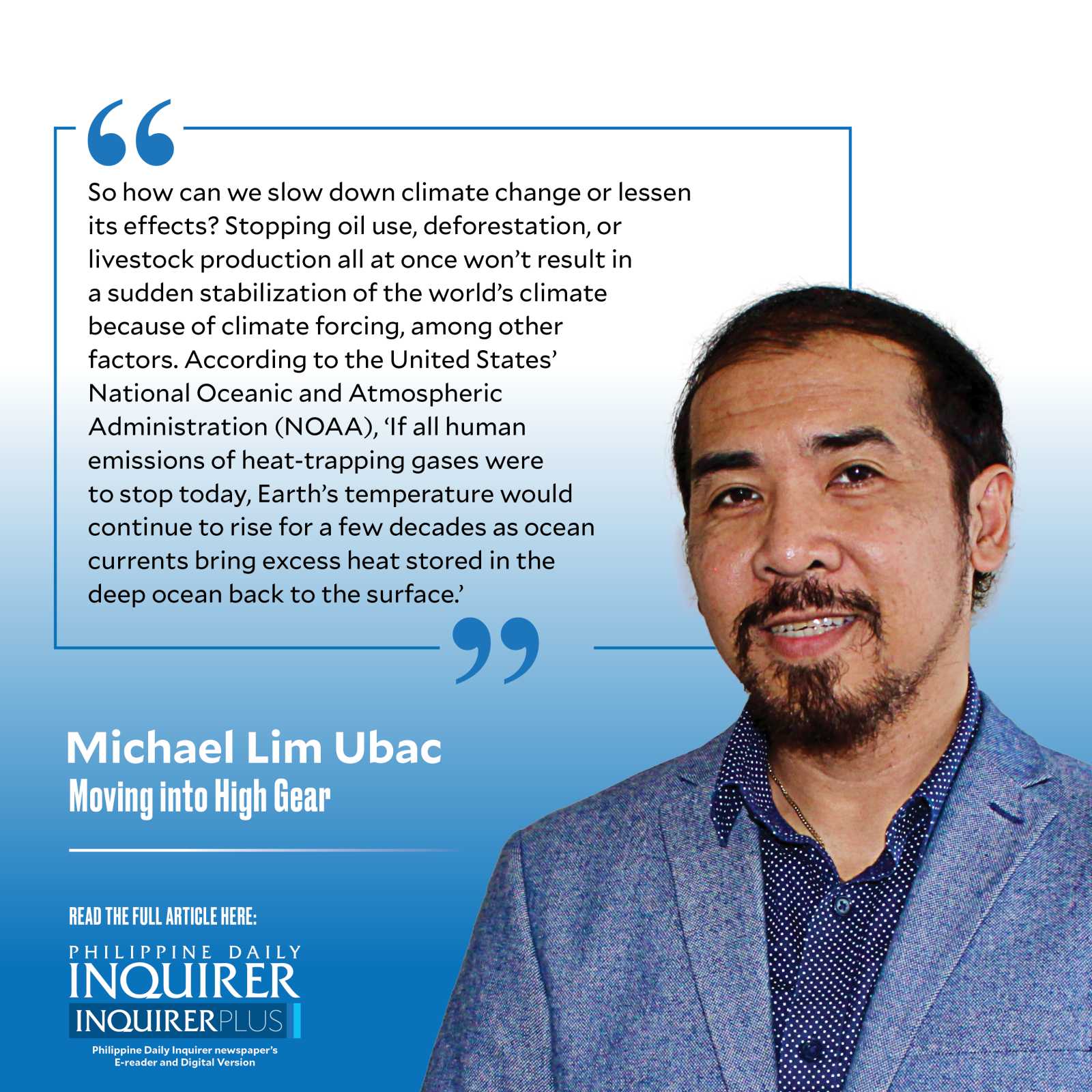Has the planet’s climate gone haywire?

As the heat index ranges from 42 degrees Celsius to 51 degrees Celsius this summer in the Philippines, the link between global warming (more aptly called climate change) and extreme temperatures has never been more pronounced than now. Human-induced climate change is behind the collective misery of billions of people across the globe, including Filipinos who must stay indoors during noon and early afternoon to avoid heat-related illnesses.
The burning of fossil fuels (oil, coal, and natural gas) since the Industrial Revolution is the main driver of climate change, causing the planet to become warmer in certain areas and wetter in others. When summer rolls around in countries like the Philippines, Indonesia, Thailand, Malaysia, India, and Central American nations, the intensity of the infernal heat is higher. At the same time, the northern hemisphere is experiencing cold and snowy conditions even in late spring.
Article continues after this advertisementFor instance, while the heat index in the Philippines was starting to rise in late March, snowstorms were still impacting the midwest and northeastern United States. The contrast was visible not only on the news but also on social media posts, showing people around the world struggling with wild weather swings in a variety of ways.
Last April 27, Metro Manila recorded a temperature of 38.8 degrees Celsius in Pasay, breaking its previous record of 38.6 degrees Celsius set on May 17, 1915, in Manila. But the heat index (the “feels like” temperature that we actually experience) shot up to 45 degrees Celsius on April 27, with similar blistering temperatures recorded in Palawan, Camarines Norte, Albay, Iloilo, and Agusan del Norte.
CBS 42 News reported that 70 countries or territories broke heat records within the first five days of May this year. The planet has endured 13 months of record-breaking hot ocean temperatures, in addition to the natural warming caused by El Niño. According to CBS, climate scientist Katharine Hayhoe stated that “Climate change is loading the weather dice against us in every part of the world. What this means is that it is increasing not only the frequency and severity of many weather extremes, but also that the risk of compound events is increasing.”
Article continues after this advertisementStorms and flooding. The planet’s warming causes extreme climate events such as record heat and rainfall, resulting in torrential rains during the monsoon season in the Philippines. We felt one of the strongest impacts of climate change when Supertyphoon “Yolanda” barreled through Eastern Visayas in 2013, drowning Tacloban in a storm surge that killed over 6,300 people. Yolanda was the strongest storm to hit land at the time, destroying 1.1 million houses and affecting 14 million people in the Visayas. Don’t forget Tropical Storm “Ondoy” in 2009, which dumped a month’s worth of rain in just 12 hours, flooding Marikina, Rizal, and around 80 percent of Metro Manila. And the list goes on.
A few weeks ago, heavy rainfall inundated the United Arab Emirates, northern parts of Oman, and parts of Saudi Arabia. The rainfall in Dubai on April 15 surpassed its daily rainfall records for the last 75 years. What caused this excessive precipitation in a hyper-arid region? The World Weather Attribution (https://tinyurl.com/2sczpd7c) has quickly assembled scientists from across the globe to solve the puzzle.
Based on their observations, “the event was 10-40 percent more intense than it would have been had it occurred in an El Niño year in a 1.2 [degrees Celsius] cooler climate,” the scientists noted. While they observed the absence of a trend in their model results, “we have no alternative explanation for a trend in observations other than the expectation of heavy rainfall increasing in a warmer climate.”
So how can we slow down climate change or lessen its effects?
Stopping oil use, deforestation, or livestock production all at once won’t result in a sudden stabilization of the world’s climate because of climate forcing, among other factors. According to the United States’ National Oceanic and Atmospheric Administration (NOAA), “If all human emissions of heat-trapping gases were to stop today, Earth’s temperature would continue to rise for a few decades as ocean currents bring excess heat stored in the deep ocean back to the surface. Once this excess heat radiated out to space, Earth’s temperature would stabilize.”
The most optimistic prediction for the climate to stabilize, if there is no further human influence, will happen after 40 years, according to one scientist at the University of Michigan.
But we can slow the rate and limit the amount of global warming by reducing human emissions of heat-trapping gases and soot (“black carbon”), NOAA said. To do so, it is necessary to limit temperature increases to 1.5 degrees Celsius above pre-industrial levels, which can be achieved by reducing oil and gas production (and oil consumption) in rich countries by 74 percent by 2030 and reducing our carbon footprint.
—————-
For comments: lim.mike04@gmail.com;
















